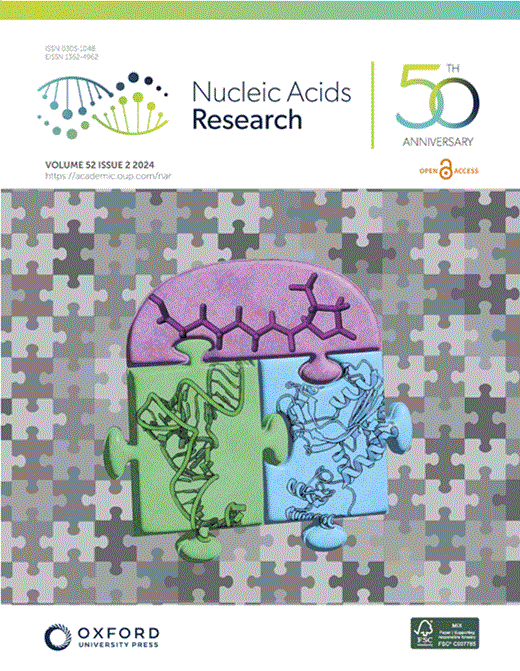Force-induced melting and S-DNA pathways for DNA overstretching exhibit distinct kinetics
IF 13.1
2区 生物学
Q1 BIOCHEMISTRY & MOLECULAR BIOLOGY
引用次数: 0
Abstract
It is widely appreciated that double stranded DNA (dsDNA) is subjected to strong and dynamic mechanical forces in cells. Under increasing tension B-DNA, the most stable double-stranded (ds) form of DNA, undergoes cooperative elongation into a mixture of S-DNA and single stranded DNA (ssDNA). Despite significant effort, the structure, energetics, kinetics and the biological role of S-DNA remains obscure. We here stretch 60 base pair (bp) dsDNA oligonucleotides with a variable number of tricyclic cytosine, tC, modifications using optical tweezers. We observe multiple fast cooperative and reversible two-state transitions between B-DNA and S-DNA. Notably, tC modifications increase the transition force, while reducing the transition extension and free energy due to progressively increasing fraying of the dsDNA ends. We quantify the average number of bps undergoing the B-to-S transition, as well as the free energies and rates. This allows us to reconstruct the B-to-S free energy profiles in absence of force. We conclude that S-DNA is an entirely force-induced state, and that the B-to-S transition is much faster than internal dsDNA melting. We hypothesize that S-DNA may have a role as a transient intermediate in, for example, molecular motor-induced local dsDNA strand separation.力诱导的熔化和S-DNA路径的DNA过度拉伸表现出不同的动力学
人们普遍认识到,双链DNA (dsDNA)在细胞中受到强大的动态机械力的作用。在不断增加的张力下,最稳定的双链DNA (ds)形式的B-DNA进行合作延伸,形成S-DNA和单链DNA (ssDNA)的混合物。尽管付出了巨大的努力,S-DNA的结构、能量学、动力学和生物学作用仍然不清楚。我们在这里拉伸60个碱基对(bp) dsDNA寡核苷酸与可变数量的三环胞嘧啶,tC,修饰使用光学镊子。我们观察到B-DNA和S-DNA之间的多个快速合作和可逆的两态转变。值得注意的是,tC修饰增加了过渡力,同时由于dsDNA末端逐渐增加的磨损而降低了过渡延伸和自由能。我们量化了经历b到s转变的平均bps数,以及自由能和速率。这使我们能够在没有力的情况下重建b - s自由能分布。我们得出结论,S-DNA完全是一个力诱导状态,并且b到s的转变比内部dsDNA熔化快得多。我们假设S-DNA可能在分子马达诱导的局部dsDNA链分离中起到短暂中间体的作用。
本文章由计算机程序翻译,如有差异,请以英文原文为准。
求助全文
约1分钟内获得全文
求助全文
来源期刊

Nucleic Acids Research
生物-生化与分子生物学
CiteScore
27.10
自引率
4.70%
发文量
1057
审稿时长
2 months
期刊介绍:
Nucleic Acids Research (NAR) is a scientific journal that publishes research on various aspects of nucleic acids and proteins involved in nucleic acid metabolism and interactions. It covers areas such as chemistry and synthetic biology, computational biology, gene regulation, chromatin and epigenetics, genome integrity, repair and replication, genomics, molecular biology, nucleic acid enzymes, RNA, and structural biology. The journal also includes a Survey and Summary section for brief reviews. Additionally, each year, the first issue is dedicated to biological databases, and an issue in July focuses on web-based software resources for the biological community. Nucleic Acids Research is indexed by several services including Abstracts on Hygiene and Communicable Diseases, Animal Breeding Abstracts, Agricultural Engineering Abstracts, Agbiotech News and Information, BIOSIS Previews, CAB Abstracts, and EMBASE.
 求助内容:
求助内容: 应助结果提醒方式:
应助结果提醒方式:


